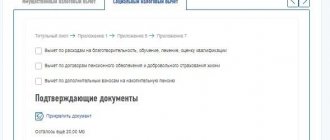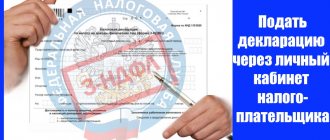What is a tax deduction for treatment?
According to the legislation of the Russian Federation (Article 219 of the Tax Code of the Russian Federation), when paying for treatment or medications, you can count on a tax deduction and return part of the money spent on treatment .
A tax deduction is the portion of income that is not subject to tax. Therefore, you can return the tax paid on the expenses incurred for treatment. If you officially work and pay income tax, have paid for your treatment or the treatment of your relatives , you can get back part of the money in the amount of up to 13% of the cost of treatment .
In what cases can you get a tax deduction for treatment?
You can take advantage of the social tax deduction for treatment and get part of your expenses back in the following cases:
- You can get a tax deduction when paying for medical services, If:
- paid for services for their own treatment or treatment of close relatives (spouse, parents, children under 18 years of age) provided by medical institutions in Russia;
- paid services are included in a special list of medical services for which a deduction is provided. The list of services is defined in Decree of the Government of the Russian Federation dated March 19, 2001 N 201.
- the treatment was carried out in a medical institution licensed to carry out medical activities;
- You can get a tax deduction when paying for medicines, If:
- paid at their own expense for medications for themselves or their immediate relatives (spouse, parents, children under 18 years of age) prescribed by the attending physician.
- You can get a tax deduction when paying for voluntary health insurance, If:
- paid insurance premiums under a voluntary health insurance agreement or insurance for immediate relatives (spouse, parents, children under 18 years of age);
- the insurance contract only provides for payment for treatment services;
- the insurance organization with which the voluntary insurance agreement has been concluded has a license to conduct the corresponding type of activity.
Expensive treatment: when is a personal income tax return declaration issued?
In some cases, there is a need for expensive treatment, and here you need to have a good idea of what documents are needed for 3-NDFL. The fact is that a tax deduction is allowed in such circumstances, and in an almost unlimited amount, but subject to certain conditions:
- firstly, the type of treatment must be included in the list approved by Decree of the Government of the Russian Federation dated March 19, 2001 No. 201 ();
- secondly, you should start filling out a return of income tax for treatment only after receiving a specific certificate issued by a medical institution (approved by order of the Ministry of Health of the Russian Federation No. 289).
When receiving a certificate, you should pay attention to the service code. For expensive treatment, the corresponding field should contain the number 2. When one appears there, the deduction will be limited to the usual limits of 120,000 rubles.
Amount of tax deduction for treatment
The amount of tax deduction for treatment is calculated for the calendar year and is determined by the following factors:
- You cannot return more money than you transferred to the income tax budget (about 13% of the official salary).
- You can return up to 13% of the cost of paid treatment/medicines , but not more than 15,600 rubles . This is due to the restriction on the maximum deduction amount of 120 thousand rubles (120 thousand rubles * 13% = 15,600 rubles). The limit of 15,600 rubles applies not only to deductions for treatment, but to all social deductions. The amount of all social deductions (training, treatment, pension contributions) should not exceed 120 thousand rubles. You can return a maximum of 15,600 rubles for all deductions).
- There is a certain list of expensive medical services to which the limit of 15,600 rubles does not apply . You can receive a tax deduction and get 13% back on the full cost of such services in addition to all other social deductions. The full list of expensive services is defined in Decree of the Government of the Russian Federation of March 19, 2001 N 201. You can find it here: List of expensive types of treatment
Example : In 2021 Ivanov A.A. paid for a course of dental treatment worth 140 thousand rubles and a paid operation related to expensive treatment costing 200 thousand rubles. At the same time, in 2021 he earned 500 thousand rubles and paid income tax of 62 thousand rubles.
Since dental treatment is not an expensive treatment, the maximum tax deduction for it is 120 thousand rubles (which is less than 140 thousand rubles). Since the operation of Ivanov A.A. refers to expensive types of treatment, there are no restrictions on tax deductions for it.
Total in 2021 for 2021 Ivanov A.A. will be able to return to himself (120 thousand rubles + 200 thousand rubles) * 13% = 41,600 rubles. So Ivanov A.A. paid taxes more than 41,600 rubles, he will be able to return the entire amount.
Additional and more complex examples of calculating a tax deduction for treatment can be found here: Examples of calculating a tax deduction for treatment
Tax deduction for expensive treatment: procedure for registration and preparation of documents
To qualify for tax due to undergone treatment you must:
- Keep all signed agreements for medical procedures intact.
- Do not lose paid checks and receipts.
- At the end of the year or after the end of therapy, request a certificate from the medical institution confirming payment for the services provided. To ensure that your request is not denied, you must present at the registration desk:
- TIN and passport;
- contracts and checks.
- Prepare a tax return (form 3-NDFL).
- Provide the necessary documents to the tax service.
If everything is done correctly, specialists will have no reason to refuse.
A tax deduction for treatment that is considered expensive is allowed to be received annually if such expenses occurred. It is declared regardless of other deductions, for example, for the purchase of housing. The benefit amount is calculated separately.
Documents for registration of deduction
An extended list of documents that should be provided to tax specialists is contained in the table:
| Are common | Additional |
| 1. Tax return | 1. Certificate: – of marriage, in the case of therapeutic procedures provided to the husband or wife |
| 2. Copy of passport, TIN | – about the birth of a child while he was being treated. The child must not be over 18 |
| 3. Certificate of income (form 2-NDFL) | – about the birth of the applicant, if he claims a tax deduction for parental therapy |
| 4. Agreement with a medical institution. It must contain license information | 2. A prescription for medicines with a stamp “for the tax authorities of the Russian Federation” |
| 5. Receipts and receipts for payment for services | 3. Receipts for paid medications |
| 6. A certificate from a medical institution indicating that the treatment performed is expensive | |
| 7. Application for a refund of tax deduction. You should indicate your bank account details there. |
Important! The doctor who treats the patient must give him two copies of the prescription form. One is presented to the pharmacy, and the second is provided to the tax office in order to qualify for the benefit.
When applying for a deduction for health insurance, the following must be presented:
- agreement with an insurance company;
- her license;
- receipts confirming payment for services.
All documents must be certified either by a notary or independently. When certifying in person, you should write on each page: “Copy is correct,” put a short and long signature, and indicate the number.
The contract can be drawn up for the person who was treated, for his parents, or for his spouse. It is necessary that the payment documents include the full name of the person who is applying for an income tax refund. Agreements cannot be entered into with minors.
The tax is refunded for the previous 3 years. In 2021, it is possible to partially reimburse funds spent on expensive therapy in 2014-2016.
The deadline for submitting the package of documents has not been set. It can be provided all year round.
The process of obtaining a deduction for treatment
The process of obtaining a deduction for treatment consists of collecting and submitting documents to the tax office, checking the documents by the tax office and transferring money. You can learn more about the process of obtaining a tax deduction, indicating the deadlines, here: The process of obtaining a tax deduction for treatment.
The process of obtaining a deduction can be simplified by using our service. We will fill out the 3-NDFL declaration for you, tell you what other documents you will need for the deduction, and also give detailed instructions on submitting documents to the tax authorities. Or we will send your documents ourselves, without your participation. If you have any questions while working with the service, tax experts will be happy to advise you.
Documents required to apply for a tax deduction for treatment
To apply for a tax deduction, you will first need:
- declaration 3-NDFL;
- agreement with a medical institution;
- certificate of payment for medical services;
- documents confirming your expenses;
- documents confirming the paid income tax (certificate 2-NDFL).
You can view the full list of documents here: Documents for tax deductions for treatment.
Results
It is not difficult to collect documents for income tax refund for treatment. You need to write an application, obtain 2-NDFL certificates, make a copy of your passport, take a certificate of payment for medical services or a prescription form (in case of purchasing medicines), attach copies of the contract, license for medical activities and payment documents, and also fill out a 3-NDFL declaration .
The specified list will have to be supplemented with documents confirming the degree of relationship (birth or marriage certificates) if the applicant of the deduction paid for the treatment of his close relatives.
A deduction can also be claimed for the costs of paying voluntary insurance premiums. In this case, you will additionally need a certified copy of the agreement with the insurance company or an insurance policy, as well as a copy of the license to carry out insurance activities and payment documents.
Sources:
- Tax Code of the Russian Federation
- Decree of the Government of the Russian Federation of March 19, 2001 No. 201
- Order of the Ministry of Health and the Ministry of Taxes of Russia dated July 25, 2001 No. 289/BG-3-04/256
You can find more complete information on the topic in ConsultantPlus. Free trial access to the system for 2 days.
When and for what period can I receive a tax deduction?
You can get your money back for treatment only for those years in which you paid directly. However, you can submit a declaration and return the money through the tax office only in the year following the year of payment or later. That is, if you paid for treatment in 2021, you will be able to return the money no earlier than 2021.
If you did not file a deduction immediately, you can do it later, but you can return the tax for no more than the last three years. For example, if you paid for treatment in 2016-2020 and did not receive a tax deduction, then in 2021 you can get your tax back only for 2021, 2021 and 2021.
The entire procedure for obtaining a deduction usually takes three to four months. Most of the time is spent checking documents by the tax office.
Note: from January 1, 2021, a social tax deduction for treatment can be obtained through an employer, and there is no need to wait until the end of the calendar year. You can find details about receiving a deduction through an employer in our article: Obtaining a tax deduction for treatment through an employer.
Important nuances
We would like to draw your attention to several important points. Income tax refunds are possible only for those annual periods in which payments for medical procedures and medications were made.
Receiving the full amount in a one-time payment is possible only after the end of the current tax period, that is, next year. If the deduction has not been processed in a timely manner, the procedure can be carried out later, however, no later than within the next two years, since, according to the letter of the law, payments for deductions are made for the three years preceding the current tax period.
List of medical services for which a tax deduction is provided
According to Decree of the Government of the Russian Federation No. 201 of March 19, 2001, the following medical services can be taken into account in tax deductions:
- Diagnostic and treatment services when providing emergency medical care to the population.
- Services for diagnosis, prevention, treatment and medical rehabilitation in the provision of outpatient medical care to the population (including in day hospitals and by general (family) practitioners), including medical examination.
- Services for diagnosis, prevention, treatment and medical rehabilitation when providing inpatient medical care to the population (including in day hospitals), including medical examination.
- Services for diagnosis, prevention, treatment and medical rehabilitation when providing medical care to the population in sanatorium and resort institutions.
- Health education services provided to the public.
List of expensive types of treatment for which a tax deduction is provided
According to Decree of the Government of the Russian Federation No. 201 of March 19, 2001, the following medical services are expensive and are taken into account in the tax deduction in full (without a limit of 120 thousand rubles) :
- Surgical treatment of congenital anomalies (developmental defects).
- Surgical treatment of severe forms of circulatory system diseases, including operations using artificial blood circulation machines, laser technologies and coronary angiography.
- Surgical treatment of severe forms of respiratory diseases.
- Surgical treatment of severe forms of diseases and combined pathologies of the eye and its appendages, including the use of endolaser technologies.
- Surgical treatment of severe forms of nervous system diseases, including microneurosurgical and endovasal interventions.
- Surgical treatment of complicated forms of diseases of the digestive system.
- Endoprosthetics and reconstructive operations on joints.
- Transplantation of organs (complex of organs), tissues and bone marrow.
- Replantation, implantation of prostheses, metal structures, pacemakers and electrodes.
- Reconstructive, plastic and reconstructive plastic surgeries.
- Therapeutic treatment of chromosomal disorders and hereditary diseases.
- Therapeutic treatment of malignant neoplasms of the thyroid gland and other endocrine glands, including the use of proton therapy.
- Therapeutic treatment of acute inflammatory polyneuropathies and complications of myasthenia gravis.
- Therapeutic treatment of systemic connective tissue lesions.
- Therapeutic treatment of severe forms of diseases of the circulatory, respiratory and digestive organs in children.
- Combined treatment of pancreatic diseases.
- Combined treatment of malignant neoplasms.
- Combined treatment of hereditary bleeding disorders and aplastic anemia.
- Combined treatment of osteomyelitis.
- Combined treatment of conditions associated with complicated pregnancy, childbirth and the postpartum period.
- Combined treatment of complicated forms of diabetes mellitus.
- Combined treatment of hereditary diseases.
- Combined treatment of severe forms of diseases and combined pathologies of the eye and its adnexa.
- Complex treatment of burns with a body surface area of 30 percent or more.
- Types of treatment associated with the use of hemo- and peritoneal dialysis.
- Nursing premature babies weighing up to 1.5 kg.
- Treatment of infertility using in vitro fertilization, cultivation and intrauterine embryo insertion.









